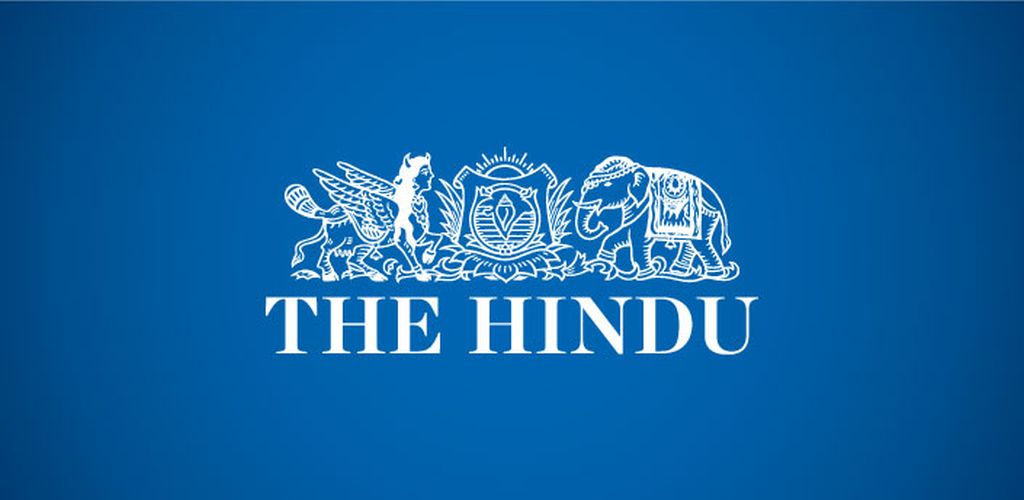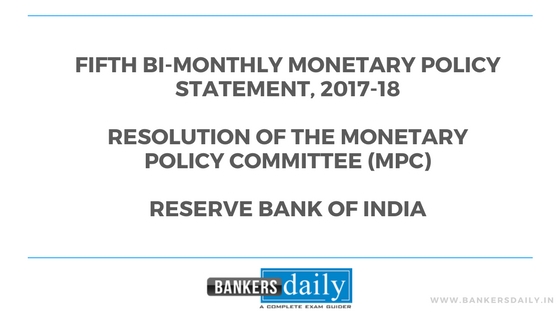TNFUSRC FORESTER RECRUITMENT 2018 – Syllabus
TNFUSRC FORESTER RECRUITMENT 2018 – Syllabus
Dear TNPSC Aspirants,
Tamil Nadu Forest Uniformed Services Recruitment Committee (TNFUSCR) has now released notification for the post of Forester, Forest Guard and Forest Guard with Driving License and aspirants have been in search for the Syllabus for the TNFUSRC Forester Exam 2018. This TNFUSCR recruitment 2018registrations will start on 15th October 2018.
The total number of vacancies available for the TNFUSCR (Tamil Nadu Forest Uniformed Services Recruitment Committee) is 1178.
Candidates selection will be made by Online Examination for the Direct Recruitment of the above post vacancies. So the OMR method for exams are over and TNPSC is conducting the exams in ONLINE mode from thisTNFUSCR 2018 recruitment process.
We have provided the detailed Syllabus for the TNFUSRC – Forester 2018 – Exam in this post. Please find it in the below given one.
SYLLABUS – TNFUSRC Forester 2018 Exam
Paper – I – General Knowledge
Unit I: Current Events
History-Latest diary of events – National‐‐National symbols‐Profile of States‐Defence, national security, and terrorism‐World organizations‐pacts and summits‐Eminent persons & places in news‐Sports & games‐Books & authors ‐Awards & honours‐Cultural panorama‐Latest historical events‐‐ India and its neighbors– Latest terminology‐ Appointments‐who is who?
Political Science-
1.India’s foreign policy‐
2.Latest court verdicts – public opinion‐
3.Problems in conduct of public elections ‐
4.Political parties and political system in India‐
5.Public awareness & General dministration‐
6. Role of Voluntary organizations & Govt.,‐
7. Welfare oriented govt. schemes, their utility
Geography –Geographical landmarks‐Policy on environment and ecology—
Economics-Current socio‐economic Problems-New economic policy & govt. sector
Science-Latest inventions on science & technology‐Latest discoveries in Health Science‐Mass media & communication.
Unit II: Geography
Earth and Universe‐Solar system‐Atmosphere hydrosphere, lithosphere‐Monsoon, rainfall, weather and climate‐Water resources ‐‐‐ rivers in India‐Soil, minerals & natural resources‐Natural vegetation‐Forest & wildlife‐Agricultural pattern, livestock & fisheries‐Transport including Surface transport & communication‐Social geography – population‐density and distribution‐Natural calamities – disaster management‐Climate change ‐ impact and consequences ‐ mitigation measures‐Pollution Control
Unit III: History and Culture of India
Pre‐historic events‐‐Indus valley civilization‐Vedic, Aryan and Sangam age‐Maurya dynasty‐Buddhism and Jainism‐Guptas, Delhi Sultans, Mughals and Marathas‐Age of Vijayanagaram and the ahmanis‐South Indian history‐Culture and Heritage of Tamil people‐Advent of European invasion‐Expansion and consolidation of British rule‐Effect of British rule on socio‐economic factors‐Social reforms and religious movements‐India since independence‐Characteristics of Indian culture‐Unity in diversity –race, colour, language, custom‐India‐as secular state‐Organizations for fine arts, dance, drama, music‐ Growth of rationalist, Dravidian movement in TN‐Political parties and populist schemes‐Prominent personalities in the various spheres – Arts, Science, literature and Philosophy – Mother Teresa, Swami Vivekananda, PanditRavishankar , M.S.Subbulakshmi, Rukmani Arundel and J.Krishnamoorthy etc.
Unit IV: Indian Polity
Constitution of India‐. The preamble to the constitution‐ Salient features of constitution‐Union, State and territory‐ Citizenship‐rights amend duties‐ Fundamental rights‐Fundamental duties‐ Human rights charter‐ Union legislature – Parliament‐ State executive‐ State Legislature – assembly‐ Status of Jammu & Kashmir‐ Local government– panchayat raj – Tamil Nadu‐ Judiciary in India
– Rule of law/Due process of law‐Indian federalism – center – state relations‐. Emergency provisions‐ Civil services inIndia‐ Administrative challenges in a welfare state‐ Complexities of district administration‐ Elections ‐ Election Commission Union and State. Official language and Schedule‐VIII‐ Amendments to constitution‐ Schedules to constitution‐. Administrative reforms & tribunals‐ Corruption in public life‐ Anti‐corruption measures – Central Vigilance Commission, lok‐adalats, Ombudsman, ‐ Comptroller and Auditor General of India‐ Right to information ‐ Central and State Commission‐ Empowerment of women‐Voluntary organizations and public grievances Redressal‐ Consumer protection forums
Unit V: Indian Economy
Nature of Indian economy‐Need for economic planning‐Five‐year plan models‐an assessment‐Land reforms & agriculture‐Application of science in agriculture‐Industrial growth‐Capital formation and investment‐Role of public sector & disinvestment‐Development of infrastructure‐ National income‐ Public finance & fiscal policy‐ Price policy & public distribution‐ Banking, money & monetary policy‐ Role of Foreign Direct Investment (FDI)‐ WTO‐globalization & privatization‐ Rural welfare oriented programmes‐ Social sector problems – population, education, health, employment,poverty‐HRD – sustainable economic growth‐ Economic trends in Tamil Nadu ‐Energy Different sources and development‐ Finance Commission ‐Planning Commission‐National Development Council
Unit VI: Indian National Movement
National renaissance‐Early uprising against British rule‐1857 Revolt‐ Indian National Congress‐Emergence of national leaders‐Gandhi, Nehru, Tagore, Nethaji ‐Growth of militant movements ‐Different modes of agitations‐Era of different Acts & Pacts‐World war & final phase struggle‐Communalism led to partition‐Role of Tamil Nadu in freedom struggle ‐ Rajaji, VOC, Periyar, Bharathiar& Others‐Birth of political parties /political system in India since independence
Unit VII: Aptitude & Mental Ability Tests (includes data analysis)
Conversion of information to data‐Collection, compilation and presentation of data ‐Tables, graphs, diagrams‐Parametric representation of data‐Analytical interpretation of data Simplification‐Percentage‐Highest Common Factor (HCF)‐Lowest Common Multiple (LCM)‐Ratio and Proportion‐Simple interest‐Compound interest‐Area‐Volume‐Time and Work‐Behavioral ability ‐Basic terms, Communications in information technology‐Application of Information and Communication Technology (ICT)‐ Decision making and problem solving‐Logical Reasoning‐Puzzles‐Dice‐Visual Reasoning‐Alpha numeric Reasoning‐Number Series‐Logical Number/Alphabetical/Diagrammatic Sequences.
Unit VIII: General English– S.S.L.C. Standard
1. Match the following words and Phrases given in Column A with their meanings in Column B
2. Choose the correct ‘Synonyms’ for the underlined word from the options given
3. Choose the correct ‘Antonyms’ for the underlined word from the options given
4. Select the correct word (Prefix, Suffix)
5. Fill in the blanks with suitable
6. Fill in the blanks with the suitable preposition
7. Select the correct Question Tag
8. Select the correct Tense.
9. Select the correct Voice
10. Fill in the blanks (infinitive, Gerund, participle)
11. Identify the sentence pattern of the following sentence (Subject, Verb,Object …)
12. Change the following:- (Verb into Noun, Noun into Verb, Adjective into Adverb)
13. Fill in the Blanks with correct ‘Homophones’
14. Find out the Error (Articles, prepositions, Noun Verb Adjective, Adverb)
15. Comprehension
16. Select the correct Sentence
17. Find out the odd Words, (Verb, Noun, Adjective, Adverb)
18. Select the Correct Plural Forms
19. Identify the sentence (Simple, Compound, Complex Sentence)
20. Identify the correct Degree.
Unit IX :பொது தமிழ் எஸ்.எஸ்.எல்.சி தரம்
1. பொறுத்துதல்
i. பொருத்தமான பொருளைத் தேர்வு செய்தல்
ii. புகழ் பெற்ற நூல் நூலாசிரியர்
2. தொடரும் தொடர்பும் அறிதல்
i. இத்தொடரால் குறிக்கப்பெரும் சான்றோர்
ii. அடைமொழியால் குறிக்கப்பெரும் நூல்
3. பிரித்தெழுதுக
4. எதிர்ச்சொல்லை எடுத்தெழுதுக
5. பொருந்தாச் சொல்லைக் கண்டறிதல்
6. பிழை திருத்தம்
i. சந்திப்பிழையை நீக்குதல்
ii. ஒருமை பன்மை / பிழைகளை நீக்குதல்
iii. மரபுப் பிழைகள், வழுவுச் சொற்களை நீக்குதல்
iv. பிறமொழிச் சொற்களை நீக்குதல்
7. அங்கிலச் சொல்லுக்கு நேரான தமிழ்ச் சொல்லை அறிதல்
8. ஒலி வேறுபாடறிந்து சரியான பொருளையறிதல்
9. ஓரெழுத்து ஒருமொழி உரிய பொருளைக் கண்டறிதல்
10. வேர்ச்சொல்லைத் தேர்வு செய்தல்
11. வேர்ச்சொல்லைத் கொடுத்து / வினைமுற்று, வினையெச்சம், வினையாலணையும் பெயர், தொழிற்பெயரை / உருவாக்கல்
12. அகர வரிசைப்படி சொற்களைச் சீர் செய்தல்
13. சொற்களை ஒழுங்குபடுத்தி சொற்றொடராக்குதல்
14. பெயர்ச்சொலின் வகையறிதல்
15. இலக்கணக் குறிபறிதல்
16. விடைக்கேற்ற வினாவைத் தேர்ந்தெடுத்தல்
17. எவ்வகை வாக்கியம் எனக் கண்டெழுதல்
18. தன்வினை, பிறிவினை, செய்வினை, செயபாட்டுவினை வாக்கியங்களைக் கண்டெடுத்தல்
19. உவமையால் விளக்கப்பெறும் பொருத்தமான பொருளைத் தேர்ந்தெடுத்தல்
20. உவமையால் விளக்கப்பெறும் பொருத்தமான பொருளைத் தேர்ந்தெடுத்தல்
20. மோனை, எதுகை, இயைபு இவற்றுள் ஏதேனும் ஒன்றை தேர்ந்தெடுத்தல்
Paper-II General Science
( Equivalent to Class IX & X of Samacheer Kalvi of TN Board)
1: Improvement in Food Resources: Improvement in crop yields, Nutrient management, Uses of manures and fertilizers, Protection from pests and diseases, Hybridization in Plants and animals, Animal husbandry, Poultry farming, Pisciculture, Apiculture, Aquaculture
Heredity and Evolution: Heredity, Variations, Evolution, Speciation, Human evolution, Evolution tree, Genetic engineering, Bio technology and cloning, Stem cell-Organ culture, Microbial production, Biosensor – Bio chips, Science today – Gene Therapy
Addiction and Healthy Life Style: Addictions, Kinds of addictions—drug, alcohol, smoking, substance abuse), Prevention of addiction, Healthy Life style –Prevention of Heart Diseases, Obesity
2: Immune System: Health and its significance, Diseases and causes, Diseases caused by microbes and Prevention, Modes of transmission, Immunization, Treatment and prevention, Biotechnology in Medicine, HIV and Prevention
3: Human Body –Organ System: Skin, Musculoskeletal system, Digestive system, Excretory system, Circulatory system, Respiratory system (Microscopic structure of the tissues involved for each system)
Structure & Function of the Human Body – Organ System, Nervous system, Endocrine system, Cell division -Stages of Meiosis, Heredity
4: Structure and Physiological Functions of Plants: Plant cells, Plant tissues, Plant Functions, Photosynthesis, Transpiration, Respiration, Transportation, Plant Nutrition
Reproduction in Plants: Modes of reproduction- vegetative, asexual and sexual reproduction in Plants, Pollination, Fertilization, Fruits and seeds, Movements in plants, Sensitivity in plants formation, Seed dispersal
5: Animal Kingdom: Invertebrates, Vertebrates –focus on special features in addition to basic functions, Various Modes of reproduction in animals ( asexual and sexual reproduction), Reproduction in human, Fertilization, Development of embryo, Viviparous, Oviparous, Young ones to adult
A Representative Study of Mammals Morphology: Habitats, Adaptations, Basic Physiological Functions, Circulatory system in man, Excretory system in man, Relationship of structure to functions, Animal Behaviour, Behaviour (social, reproductive, parental care) Some case studies from researchers (animals behavior)
6: Cells and Tissues: Prokaryotic and eukaryotic cells, Multi cellular organisms, Cell as a basic unit of Life, Cell membrane and Cell wall, Cytoplasm, Cell organelles, Nucleus, Chromosomes- DNA structure Cell division and types, stages of mitosis, Diffusion /exchange of substances between cells and their environment, Tissues Types, structure and function of plant tissues
Life Processes: Definition, Types of nutrition and human digestive system, Respiration, Transportation in plants-water and minerals and animals -blood circulation, Excretion in plants and animals, Nervous system, Coordination in plants, Movement due to growth, Hormones in animals
7: Bio-Geochemical Cycle: Life –non-life interactions (biotic & abiotic factors), Water cycle, Nitrogen cycle, Carbon cycle, Oxygen cycle
Conservation of Environment: Bio degradable and non bio degradable wastes, Water management, Wild life sanctuaries, Balance in Ecosystem, Coal and petroleum, Green chemistry, Science today –Towards a global Village
8: Pollution and Ozone Depletion: Kinds of pollution, Air pollution, Water pollution, Soil pollution, Radioactive pollution, Noise pollution, Global warming, Green house effect, Ozone layer depletion, Science today – Oil spills
Waste Water Management: Journey of water, Sewage, Treatment, Domestic practices, Sanitation and diseases, Alternate arrangement for sewage disposal, Sanitation in public places, Energy Management, Energy audit (home, school), Renewable sources (solar, hydrogen, wind), Non–renewable sources—(coal, petroleum, natural gas), Bio-fuels— generation & use, Energy Conservation & How we can help, Bio-fuels—generation & use, Energy, Conservation & How we can help.
9: Is Matter Around us Pure: Mixtures, Characteristics of Mixtures, Difference between Mixtures, compound, Types of Mixtures, Homogeneous mixtures and their Types, Heterogeneous mixtures and their Types, Separation of different components of Mixtures, Sublimation, Immiscible liquids, Miscible liquids
Solutions: Solute and Solvent, Types of Solutions, Solubility, Factors affecting, Solubility, Problems
10: Atomic structure: Discovery of Nucleus, Rutherford Experiment, Rutherford Model of Atom, Limitations, Bohrs Model of Atom, Discovery of Neutrons, Characteristics of Fundamental particles, Composition of Nucleus, Atomic number and Mass number, Isotopes, Electronic Configuration of Atoms, Valence Electrons and valency
Atoms and Molecules: Modern atomic theory, Avogadro Hypothesis, Atomicity, Relation between vapour density and molecular mass of a gas, Difference between Atom and Molecules, Relative Atomic Mass, Relative Molecular mass, Mole Concepts, Mole-Definition, Problems based on mole concept
11: Chemical equation: Types of ions and radicals, Learning to write chemical symbols and chemical formulae by crisscrossing valencies, Introduction to write chemical reactions, Balancing chemical equations, Informations conveyed by chemical equation, Informations not conveyed by Chemical equation
Chemical Reactions: Types of chemical reactions, Rate of chemical reaction, Factors influencing the rate of the chemical reaction, Acids, Classification of acids, Chemical Properties of acids, Uses of acids, Bases, Classification of bases, Chemical properties of bases, uses of bases, Identification of acids and bases, pH scale, pH paper, Importance of pH in everyday life, Salts, Classification of salts, Uses of salts
12: Periodic Classification of Elements: Early attempts of classification of elements, Mendeleev’s periodic table, Mendeleev’s classification of elements, Metals and Non-Metals, Physical properties of Metals and Non Metals, Chemical properties of Metals and Non Metals, Reactivity series, Uses of Reactivity series, Alloys, Uses of Alloys, Nano Science, Modern periodic law, Modern periodic table, Characteristics of modern periodic table, Metallurgy, Introduction, Terminologies in metallurgy, Differences between Minerals and Ores, Occurrence of metals, Metallurgy of Al, Cu and Fe, Metallurgy of Aluminum, Metallurgy of Copper, Metallurgy of iron, Alloys, Methods of making, alloys, Copper Aluminum and Iron alloys, Corrosion ,Method s of preventing corrosion, Chemical Bonds Octet rule, Types of Chemical bond, Formation of Ionic And Covalent bond, Common Properties of ionic compounds, Common Properties of covalent compounds, Differences between Ionic and covalent Compounds, Coordinate covalent bond, Common properties of coordinate compounds
13. Carbon and its Compounds: Introduction, Compounds of carbon, Modern definition of organic chemistry, Bonding in carbon and its compounds, Allotropy, Physical nature of carbon and its compounds, Chemical properties of carbon compounds, Homologous series, Hydrocarbons and their Types, Functional groups, Classification of organic compound based on functional group, Ethanol, Ethanoic acid
14. Measuring Instruments: Concept of small Measurements, Measuring Length, Vernier Calipers, Measuring mass Weight –Concept of various balances-common balance, Spring Balance, Physical balance, Digital balance (concept only), Measuring Time – Concept of various Clocks, Analog, Digital, Quartz, Atomic Clocks, Measuring Instruments-Screw Gauge, Measuring long Distances –Astronomical distance, light
15: Motion and liquids: Uniform and non uniform motion- Measuring the rate of motion, Rate of change of velocity, Graphical representation of motion, Equation of motion by graphical method, Uniform circular motion, Centripetal and centrifugal forces, Liquids, Upthrust & buoyancy, Archimedes, Relative Density, Explanation for a body wholly or partially immersed in a liquid due to gravity
Laws of Motion and Gravitation: Balanced and imbalanced forces, First law of motion, Inertia and mass, Momentum, Second law of motion-F=ma, Third law of motion, Conservation of momentum and proof , Moment of force and couple, Gravitation, Newton’s law of gravitation, Mass, Weight, Acceleration, Mass of Earth, Science Today-Chandrayan, Cryogenic Techniques and Manned Space Station
16: Work, Power, Energy, and Heat: Work, Energy, Potential energy, Kinetic energy, Law of Conservation of energy, Rate of doing work or power, Unit of power, Heat, Thermal Capacity – Specific Heat Capacity, Change of State –melting and boiling point, Kelvin’s scale of Temperature, Gas laws and Gas equation
16.a: Electricity and Energy: Electric current and circuit, Electric potential and potential difference, Circuit diagram, Ohm’s law, Resistance of a conductor, System of resistors, Heating effect of electric current, Joules law of heating, Role of fuse, Domestic electric circuits, Electric power, Chemical effect of electric current, Electrolysis electro chemical cells, Primary and Secondary cells, Sources of Energy, Conventional sources of energy, Non- conventional source of energy, Nuclear energy, Radioactivity, Nuclear fission and nuclear fusion, Nuclear reactivity advantages, Hazards of nuclear energy, Science today –Energy from seas.
17: Sound: Production of sound, Propagation of sound, Longitudinal and Transverse waves, Reflection of sound, Echo, Reverberation, Range of hearing, Application of ultra sound (Sonar, Doppler effect)
18: Magnetic Effect of Electric Current and Light: Magnetic field and magnetic lines of force, Magnetic field due to current carrying conductor, Magnetic field due to current carrying Straight Conductor, Magnetic field due to current carrying Circular loop, Force on a current carrying conductor in a magnetic field, Fleming left hand rule, Electric motor, Electromagnetic induction, Faraday’s Experiments, Electric generator, Light, Reflection of light by Spherical mirrors – image formation and Mirror Formula, Refraction – Laws of refraction, Refractive index, Refraction by spherical lenses, Image formation by lenses, Lens formula and magnification, Power of lens, Refraction of light through a prism, Dispersion-By a glass prism, Atmospheric refraction, Human eye –Defects and rectification, Science today –Hubble space telescope.
Practice 7000 Group II Questions for TNPSC Group II Exam 2018 now @ Bankersdaily. Get the tests now.
Buy TNPSC Group II Test Series Now








1 comment
nice inforamtion